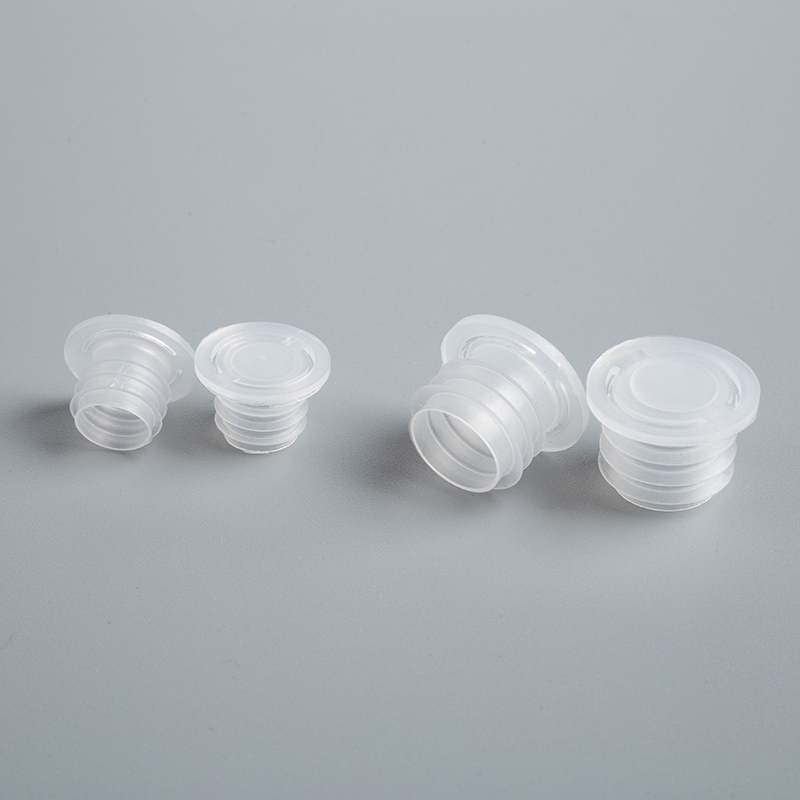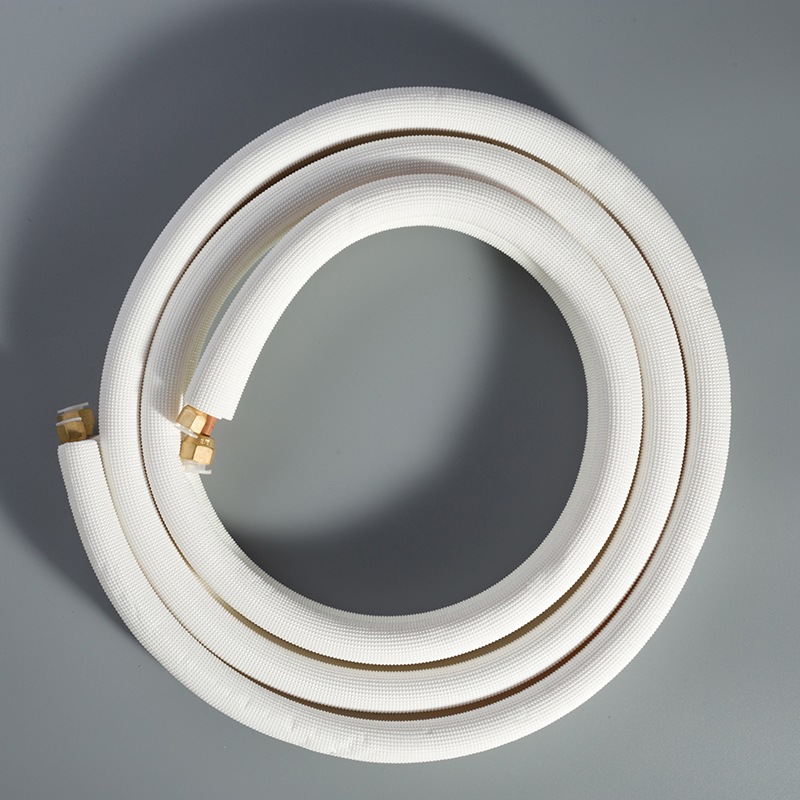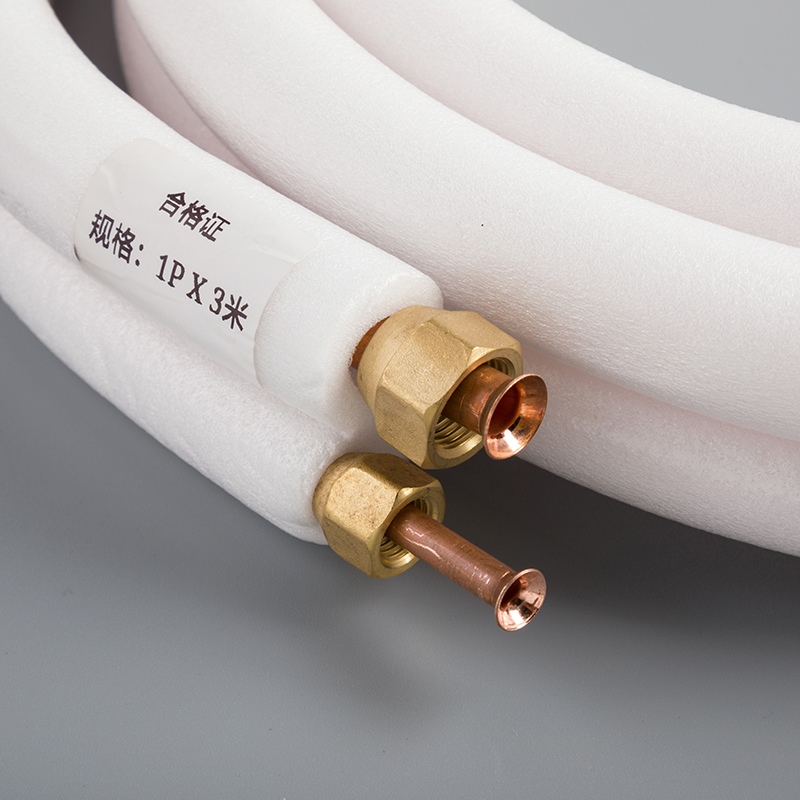Why Copper Price Fluctuations Affect Air Conditioning Costs

Write a 'Why' blog post on 'Why Copper Price Changes Impact Air Conditioning Systems'
Copper plays a vital role in HVAC systems, serving as a cornerstone for efficient heating and cooling solutions. Understanding the significance of copper in air conditioning is crucial for both manufacturers and consumers. This blog will delve into the essential properties of copper, its applications in HVAC systems, and how fluctuations in copper prices impact manufacturing costs. By exploring the economic implications of these price changes, we aim to shed light on the broader effects on construction projects and end consumers.
The Role of Copper in HVAC Systems

Copper stands as a fundamental element within HVAC systems, showcasing unparalleled properties that elevate the efficiency and longevity of heating and cooling mechanisms. Its conductivity and durability serve as pillars supporting seamless operations within air conditioning units.
Essential Properties of Copper
Conductivity
Copper's exceptional thermal conductivity enables efficient heat transfer, optimizing the performance of HVAC systems.
This property ensures rapid cooling or heating processes, contributing to energy savings and enhanced comfort levels.
Durability
The inherent durability of copper makes it a reliable choice for long-term usage in air conditioning applications.
Its resistance to corrosion guarantees the longevity of HVAC components, reducing maintenance needs and operational disruptions.
Applications in Air Conditioning
Copper Tubing
Utilized extensively in air conditioning systems, copper tubing facilitates the seamless flow of refrigerants.
The malleability of copper allows for intricate designs, ensuring precise configurations that enhance system efficiency.
Heat Exchangers
Copper's presence in heat exchangers promotes efficient heat transfer between indoor and outdoor units.
This critical component optimizes the cooling process, leading to energy savings and improved overall performance.
Impact of Copper Price Changes on Manufacturing Costs
The surge in copper prices directly impacts the manufacturing costs of HVAC systems, creating challenges for producers and consumers alike. Let's delve into how these fluctuations affect the industry and explore strategies to mitigate their consequences.
Cost of Raw Materials
Price Trends
Increasing copper prices could significantly impact the construction sector by elevating the costs of copper-based products.
This surge may lead to budget overruns, project delays, and uncertainties in bidding processes.
Supply Chain Factors
Fluctuations in copper prices can disrupt supply chains, affecting the availability and cost of raw materials.
Manufacturers may face challenges in sourcing affordable copper, leading to production delays and increased expenses.
Manufacturing Process Adjustments
Cost Management Strategies
To counter rising copper prices, manufacturers must implement cost-effective measures to maintain profitability.
Adopting efficient inventory management practices and exploring alternative material options can help mitigate cost increases.
Impact on Production Timelines
The volatility of copper prices can impact production schedules, causing delays in delivering HVAC systems to customers.
Manufacturers need to adapt their timelines based on market conditions to ensure timely delivery and customer satisfaction.
Effects on the Construction Industry and End Consumers
Increased Construction Costs
The recent surge in copper prices has sent shockwaves through the construction industry, triggering concerns about escalating expenses. With copper being a vital component in various construction applications, including electrical wiring and plumbing, the spike in prices is forcing stakeholders to reevaluate their budgets.
Budget Adjustments
Construction companies are now faced with the daunting task of recalibrating their financial plans to accommodate the rising costs of essential materials like copper. This necessitates meticulous scrutiny of project budgets and strategic adjustments to prevent cost overruns.
Project Delays
As construction costs soar due to increased copper prices, project timelines are at risk of being extended. The potential delays resulting from budget constraints could impact completion dates, leading to disruptions in schedules and contractual obligations.
Higher Consumer Prices
Consumers are also feeling the repercussions of elevated copper prices, particularly when it comes to purchasing air conditioning systems. The heightened production costs associated with copper components are translating into higher price tags for end users.
Purchase Costs
The direct correlation between copper prices and manufacturing expenses is driving up the purchase costs of air conditioning units for consumers. As manufacturers grapple with inflated material costs, these additional expenditures inevitably trickle down to buyers.
Maintenance Expenses
Beyond initial purchase expenses, consumers may face escalated maintenance costs for their air conditioning systems due to soaring copper prices. The reliance on copper components means that upkeep and repair services could become more costly over time.
Broader Economic Factors Influencing Copper Prices
Global Demand and Supply
Industrial Demand
High demand in China has been a driving force behind the recent surge in copper prices.
Prices have rebounded by almost 18% since October, reaching levels not seen in over a year.
The scarcity of copper supply relative to demand has led to an increase in prices due to market dynamics.
Mining Output
Copper demand has surpassed available supply, creating a situation where the market is struggling to meet the growing needs.
The upward trend in copper prices, with a surge of over 20% since mid-February 2024, reflects the imbalance between demand and availability.
This imbalance is driving up costs as the industry grapples with scarcity and rising demands for this essential metal.
Market Speculation and Trade Policies
Commodity Trading
Speculation in the commodity trading market has also contributed to the volatility of copper prices.
Traders are closely monitoring global economic conditions and geopolitical events that could impact copper supply chains.
The fluctuating nature of commodity trading adds another layer of complexity to understanding and predicting future price movements.
Tariffs and Trade Agreements
Tariffs on copper imports and trade agreements between nations play a significant role in shaping copper prices.
Changes in trade policies can directly influence the cost of importing or exporting copper-related products.
Uncertainties surrounding tariffs and trade agreements create challenges for industries reliant on stable pricing for their operations.
Exploring Alternative Materials

Aluminum as a Substitute
Properties and Applications
Aluminum, with its lightweight nature, offers a promising alternative to copper in HVAC systems.
The conductivity of aluminum can be enhanced to nearly match that of copper, providing cost-effective solutions for manufacturers.
Its abundance and affordability make it an attractive choice for air conditioning components.
Cost Comparison
Lightweight Design
Aluminum's lighter weight compared to copper reduces the overall load on HVAC systems, enhancing efficiency.
This weight advantage simplifies installation processes and transportation logistics, leading to cost savings.
Conductivity Enhancement
Ongoing research aims to boost aluminum's conductivity levels, making it a viable substitute for copper in various applications.
Improved conductivity allows for efficient heat transfer within air conditioning units, promoting energy savings.
Abundance and Affordability
The widespread availability of aluminum resources ensures consistent supply chains for HVAC manufacturers.
Lower production costs associated with aluminum contribute to competitive pricing for end consumers.
Other Potential Alternatives
Emerging Technologies
Innovations in material science are driving the development of new alternatives to traditional copper components.
Advanced materials offer enhanced performance characteristics, such as improved durability and energy efficiency.
Environmental Considerations
Sustainability Focus
Alternative materials prioritize sustainability by reducing environmental impact throughout the product lifecycle.
Eco-friendly options align with industry trends towards greener practices and energy-efficient solutions.
Recyclability Benefits
Many alternative materials boast high recyclability rates, supporting circular economy principles.
Recycling initiatives promote resource conservation and waste reduction in HVAC manufacturing processes.
Rapid spikes in copper prices can lead to higher raw material costs for businesses, reducing profit margins.
Contractors and developers may find it difficult to predict costs accurately due to copper price fluctuations, adding uncertainty to bidding and planning procedures.
Some manufacturers plan to replace half of their copper with aluminum by 2025.
In conclusion, monitoring copper price fluctuations is vital for both manufacturers and consumers. The future trends in copper prices could significantly impact HVAC costs, leading to adjustments in manufacturing processes and material choices. As the industry navigates these challenges, staying informed about market dynamics is key to making strategic decisions that ensure cost-efficiency and sustainability in air conditioning systems.
See Also
Benefits of Opting for Copper Tubing in Air Conditioning
Key Advantages of Copper Piping in Air Conditioning
Importance of Copper Tubes for Effective Air Conditioning


